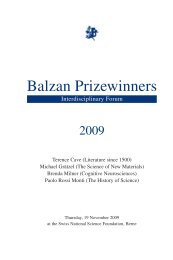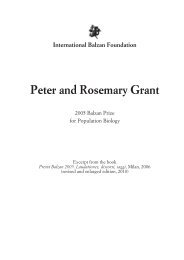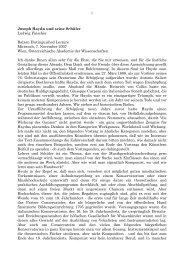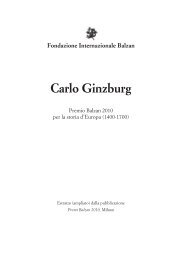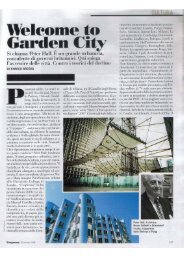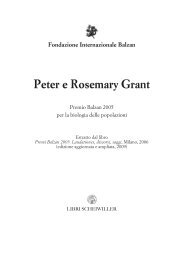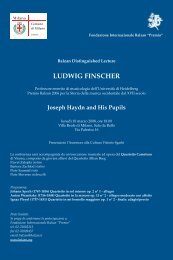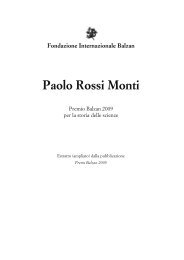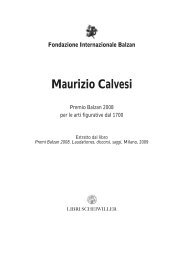Russell J. Hemley and Ho-kwang Mao
Russell J. Hemley and Ho-kwang Mao
Russell J. Hemley and Ho-kwang Mao
Create successful ePaper yourself
Turn your PDF publications into a flip-book with our unique Google optimized e-Paper software.
2005 Balzan Prize<br />
been shown to exhibit unexpected properties at very high pressures, such as an<br />
unusual infrared response indicative of the evolution of a van der Waals to a<br />
charge transfer (or ionic) state.<br />
The discovery of dense clathrates or filled ices, first observed in hydrogen-water<br />
mixtures [Phys. Rev. Lett. 71, 3150 (1993)] has opened up new lines of research.<br />
These novel structures may host trapped gases within the moons of the solar system<br />
(e.g., in the CH 4-H 2O system) [Properties of Earth <strong>and</strong> Planetary Materials at<br />
High Pressure <strong>and</strong> Temperature, 1998, p. 173]. 58 Subsequent studies have shown<br />
that hydrogen remains trapped in ice below ambient pressure [Science 297, 2247<br />
(2002)]. Moreover, the infrared spectra matches what is found in certain interstellar<br />
clouds, suggesting a mode of hydrogen incorporation in growing planetary<br />
bodies. Together with high-pressure van der Waals compounds, these dense molecular<br />
materials may be abundant in the molecular layers in extraterrestrial bodies,<br />
including surfaces <strong>and</strong> interiors of moons in the outer solar system – pointing<br />
to a new type of extraterrestrial mineralogy. New high-pressure phases in gas hydrates<br />
discovered in the methane-water system at even modest pressures of a few<br />
kilobars suggest that much of the methane clathrate buried deep in sediments in<br />
the Earth may exist in a different crystal structure than what has been observed<br />
on recovery [Proc. Nat. Acad. Sci. 97, 13484 (2000)]. Studies of these systems provide<br />
an opportunity to investigate the evolution of bonding from purely van der<br />
Waals to ionic-covalent on compression <strong>and</strong> provide an entirely new window on<br />
the nature of the chemical bond [Ann. Rev. Phys. Chem. 51, 763 (2000)].<br />
Very recently, these materials have become extremely interesting hydrogen storage<br />
materials because of their high hydrogen content <strong>and</strong> “green” chemistry (simply<br />
hydrogen gas <strong>and</strong> water). The low-pressure H 2-H 2O clathrate contains 5.4%<br />
hydrogen <strong>and</strong> therefore meets the U.S. Department of Energy 2005 milestone<br />
for a useful hydrogen storage material. The material has been patented <strong>and</strong> is being<br />
pursued by industrial <strong>and</strong> other research groups. 59 Moreover, the (H 2) 4(CH 4)<br />
phase has an astonishingly high hydrogen content of 33.4%, the highest of any<br />
known hydrogen containing material, <strong>and</strong> it can be stabilized near ambient pressure<br />
at low temperature [Chem. Phys. Lett. 402, 66 (2005)]. Like the polymerization<br />
studies of molecular materials, these discoveries are examples of the societal<br />
benefits of fundamental research in high-pressure mineral physics [Rev.<br />
Mineral. Geochem. 41, 335 (2001)].<br />
26



